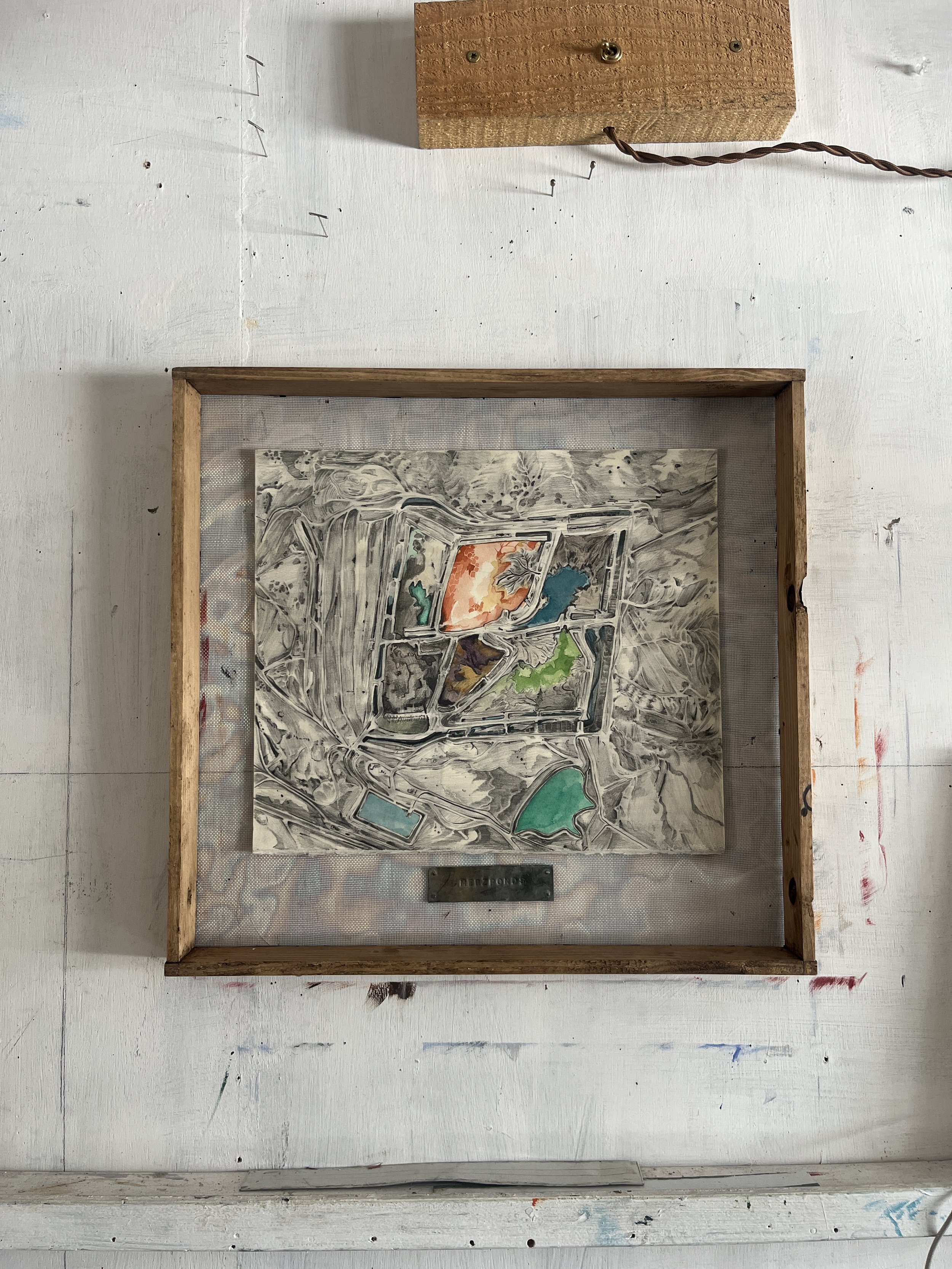Excavations
New Works by Rebecca R. Peele and Mark Morgan Dunstan
May 2nd - June 7th, 2025
Opening Reception
May 2nd, 6-8pm
When we desire to lace together a narrative of cohesion in a collective past, we first rifle through the dirt for remnants. Objects, relics, disturbed earth, ephemera; attempts at creation and destruction; subtle symbols and grand monuments – art, architecture, and artifacts amalgamate into an interpretable allegory for composite character.
This process is particularly complex in the United States. Morphing and mutating histories have happened at such industrial speed and scale in recent centuries that we hardly had time to examine and appreciate what was here in the centuries and millennia before. Because of this, when one goes looking for evidence of a common through-line, the patterns emerge in bizarre configurations.
Despite the utter vastness of this land mass, marks have been made within 50 miles of almost anywhere. Roads, mines, energy facilities, farms, fences, compounds, wagon trails, train depots, airports, shopping malls, saloons, ghost towns, museums – and yet, what do we deem most culturally relevant as a society? Do the Clovis points or the proving grounds have greater cache? Could Double Negative ever be as beautiful as the neon glow of toxic tailings ponds? Why do we love the image of the plains bison so much when we did our best to once kill them all off?
We are nothing if not a country of contradictions. We are a case study of novel experiments and their results – sometimes succeeded, sometimes failed. We are a land of haphazard overlays and often arbitrary divisions. We are a place where in the span of one day, one can stop at a building made of dinosaur bones, pull off the highway to see petroglyphs, observe cross-sections of deep time on roadway cutouts, endlessly approach the plumes billowing from a power plant, and have one’s picture taken next to life-sized public replica statues of jurassic-era specimens.
In other parts of the world, and in other epochs of the human breadth, the formalities of maintenance around ancient sites and ideas have influenced, to some degree, stereotypical assumptions about those places. In many instances, the current world has built itself up around art, architecture, and culture of historic significance; for the United States, its magnitude of expanse and compressed timeline of undergoing post-industrial transformation has dictated more of a peppered effect. A bust of a memorialized folk hero here, a plaque commemorating a significant event there, and the world’s largest ball of twine somewhere in between. Art? Depends. A museum in the middle of nowhere in West Texas, a remote salt flat in Utah, an adobe cottage under a mesa in New Mexico.
If art is what you’re looking for, perhaps you can indulge in a thought experiment. What is the line that divides a Robert Smithson from an asphalt facility? Do we ignore the White Sands missile range as we pilgrim between land art locales? In the ever-evolving Wild West, who is there to dictate what we look at and how we see it? Is it up to our own agency that we compartmentalize the “morally pure” aspirations of art from the dirty aftermath of industry? Looking from above and with a more objective formal lens, the differences aren’t necessarily as evident as we have decided them to be.
Bios:
Rebecca R Peel, b. 1990 Colorado US, currently stations in Wyoming. Between the two states, there are two UNESCO World Heritage sites: Yellowstone and Mesa Verde National Parks. The former is classified as ’natural,’ renowned for its geothermal features and abundant biodiversity; the latter is classified as ‘cultural,’ owing to its 600 cliff dwellings and thousands of other archaeological designations. Rebecca has most recently exhibited solo work in Pittsburgh, PA; New York, NY; Ephraim, UT; and Jackson, WY. IG: @rapportoire
www.rebeccarpeel.info
Mark Morgan Dunstan, b. 1984 Wyoming, US Currently lives in Wyoming working as a handyman and carpenter. Recent shows include: Tenna, Switzerland; London, UK; Brackett Creek, Montana; Jackson, Wyoming IG: @mawrq
www.markmorgan.co


